52 Weeks of Happier Homeschooling Week 24: Set More Deadlines
I know it sounds kind of counterintuitive—isn’t one of the best things about homeschooling that you get to set your own schedule and take as much time as you want with things?—but a few hard deadlines have the power to totally reshape your homeschool life.
Remember how sometimes you needed the pressure of a term paper being due in 24 hours to buckle down and start writing it? The way an actual looming deadline can motivate you to get stuff done is real phenomenon. (It’s called Parkinson’s law after a naval historian who famously said, “If you wait until the last minute, it only takes a minute to do.”) The more time you have to work on something, the more time you’ll probably take to work on it. So if you give your kid, say, a month to work on a project, he’ll take the whole month—but he probably won’t be doing productive work until close to the actual deadline.
This doesn’t mean you should run around setting deadlines for everything. Some things work best when they’re open ended. Not everything needs to get wrapped up neatly with a bow. Rushing through something rarely turns out brilliantly. But giving yourself a deadline—“I will go with the best language arts curriculum I find by June 1”—or your kids a deadline—“Let’s plan to finish this book by next weekend”—can help you work more efficiently. Another plus: Setting deadlines can help your children (and you!) learn to make more accurate guesses about how long something takes. How much multiplication can you do in 10 minutes? What if you tried to take a 30 minute lunch? Can you write a great research paper in three weeks? Understanding the time that goes into different projects can help you plan smarter and work more effectively.
Your challenge this week: Set a short-term deadline, and stick to it. An easy place to start is to give your kids a small project—finishing a book, writing a short essay, finishing a math quiz—by a certain date. Pay attention to how they use their time, and notice whether having a set deadline changes the way they work or the way you feel about how they are working.
Book Review: The Murk
If you read the Fug Girls, you know all about the scrolldown fug. If you don't read the Fug Girls, you should know that a scrolldown fug is when an outfit looks totally normal until you get to about the waist, where it switches to clown pants or carwash streamers or the dreaded tights-are-not-pants territory. What does this have to do with book recommendations? Well, The Murk by Roberty Lettrick is essentially the literary equivalent of the scrolldown fug.
It starts out normally enough. Piper, a tomboy-turned-pageant queen, is convinced that the cure to her baby sister's rare genetic disease is a plant hidden somewhere in the Okefenokee Swamp. Accompanied by her former best friend Tad (whose botanist ancestor perished on a similar search in the Okefenokee in the 1800s and who has a giant crush on his ex-best bud), her stowaway little brother, and a teenage swamp guide named Perch, Piper sets out to find the mysterious silver flower that is rumored to heal every malady. Perch cheerfully narrates the wonders of the Okefenokee to Piper and her companions (not to mention the reader) as they explore the swamp, tracing Cole's path through the wilderness. It's edu-tainment at its most palatable.
Then things get weird. Because the mythical plant isn't just real, it's sentient, with the power to hypnotize the gators, turtles, and other animal inhabitants of the swamp to do its bidding — and apparently its bidding is to make Piper and Company its dinner. (Oh, did I mention that the plant is carnivorous, too?) The second half of the book veers into a bizarre horror movie territory, with Piper escaping the burning digestive acids in the plant's giant stomach and fire-bombing the heart of the plant. Yeah. I know.
Usually, I'd skip reviewing a book like this simply because of the violence (which definitely gets a bit over-the-top), but I find myself with a soft spot for this book, despite its turn-for-the-weird. It's about the Okefenokee—one of Georgia's seven natural wonders—and the book does contain a wealth of information about one of our country's most famous swamps. And while the whole killer plant thing is pretty wacky, it does introduce some pretty interesting facts about botany. And honestly, it's so utterly odd that I want someone else to read it so its weirdness can be fully appreciated. So I say this is one to stalk at the library — worth checking out, though I'm not sure I'd want to allocate valuable shelf space for it in a permanent way. Though obviously, if you've had a hankering for a book about mind-controlling, carnivorous plants, you'll want to run, not walk, to pick this one up.
HOMESCHOOL MADNESS 2017: THE FINAL FOUR
It’s time to battle it out! We nominated 16 entries to compete for the title, and now we're down to the FINAL FOUR. Which will take the title of THE MOST HOMESCHOOLERY THING EVER? Cast your vote to decide!
Cast your votes for the third round from March 17th through March 23rd. The final two will be announced on March 24th, after which one last vote will decide THE MOST HOMESCHOOLERY THING EVER!
Voting for Round 3 is open until March 23.
Stuff We Like :: 3.17.17
Happy weekend!
around the web
If you have had a tough week, you need Friar Moustache.
And another story to make you feel better about the world: This college student is writing women back into the history of science, one Wikipedia entry at a time
Now this is an Instagram I could get behind.
at home/school/life
on the blog: Homeschool Madness is getting real, y’all! Round 3 starts this afternoon. Help us narrow the FINAL FOUR down to the FINAL TWO.
one year ago: The Music Gap that Filled Itself
two years ago: So What If All They Do Is Play Video Games?
reading list
OK, so I read a lot of books. I like a lot of books. But wow, The Hate U Give completely blew me away. It’s not an easy book to read—it’s about the shooting of a young black man by a police officer and the effect it has on a neighborhood and one girl in particular. But it is un-put-down-able. I passed this one on to my teenager immediately. I also bought another copy for my best friend.
I doubt that anyone will be surprised that I couldn’t wait to get my hands on Word by Word: The Secret Life of Dictionaries. If you are similarly obsessed with similarly obsessive books about words, this one doesn’t disappoint.
My son and I are reading Ottoline and the Purple Fox. I love Ottoline for many reasons (Mr. Munroe! Those illustrations! The postcards!), but maybe the biggest reason is that my son sometimes takes one of these books off the shelf and says, “Can we read this one again?”
in the kitchen
I finally had to replace my beloved hand-held can opener. (One can of chickpeas too many, I guess!) I don’t even know how old it was, but it was my grandmother’s before it was mine, and it had a long, proud life. I got a slightly updated version of the same one so I can keep making those endless pans of roasted chickpeas.
Cookie of the week: Olive oil sugar cookies with blood orange glaze (these were ridiculously good)
at home
We’ve been having lots of open houses and Q&A nights for Jason’s school the last few weeks, and it looks like we’re set to have a full class for fall. So yay! But it’s definitely been busy and exhausting, and I will be glad to hole up with the spring issue alone for a few weeks to recharge.
The weather is so crazy—last week, it felt like summer was on the way, and we spent every possible minute outside. This week, it’s been so cold we lit a fire. In both places, we’ve been playing lots of Adventure Time Munchkin. (They always let me be BMO. That’s love.)
Best of HSL: Our Favorite Advice for Homeschooling the Early Grades
From kindergarten through 5th grade, your goal is to instill basic skills and cultivate a love of learning.
A schedule is great, but don’t tie yourself down. Some of the best homeschool adventures happen spontaneously.
Play outside. A lot.
Read books. Kids can learn math, history, science, philosophy, grammar, and everything else from stories — and some of those lessons go down a lot easier than they would with workbooks and bubble tests.
Keep a homeschool joy journal. The time flies by, and your memories of hatching butterflies and visiting Cherokee pow-wows will start to fade.
Let your child take some tests. Don’t make them a big deal. Don’t even grade them if you don’t want to. But give him the experience of sitting down to communicate his knowledge
It’s okay to stop doing it if it’s not fun. You can always come back to it later.
Find a library system that works for you fast, or you’re going to be paying a lot of fines down the road.
Don’t spend a lot of money on curriculum items for the future. You will change your mind at least a dozen times about what you want to do before then.
Take every field trip you can. Making time for field trips gets harder as kids get older.
Forget grade level. It’s okay if your 2nd-grader isn’t ready to read or if your kindergartner is reading 4th-grade books. Don’t pin yourself down with a preconceived list of things your child needs to learn at a certain time.
Make me-time. It’s essential to your wellbeing.
You will screw up sometimes. It’s okay. Be nice to yourself about it.
Play audiobooks in the car.
Pay attention to what your child enjoys. There’s a good chance that the activities she engages in with the most enthusiasm are indicators of her natural learning style.
You will sometimes waver between feeling like you are doing way too much and like you are not doing enough. You are probably doing just the right amount.
Buy more pencils than you think you need.
Don’t be afraid of screen time. Documentaries, interactive games, and even Phineas and Ferb can be learning opportunities.
Once in a while, take a day off for no reason.
Buy more bookcases.
Accept that you will sometimes succumb to the midwinter blues, when everything about homeschooling makes you feel tired, depressed, and unsuccessful. Promise yourself to take time off and not make any big decisions till the daffodils bloom.
Incorporate housework into your daily routine. Your kids can help. Your kids should help.
Resist the urge to move on to the next thing if your child is in love with a particular subject or activity. You don’t need to rush.
Some day, you may have to push through difficult subjects until both you and your child are reduced to tears. That day is not today. There is no need to force a piece of learning at this stage.
Write down your child’s stories and poems. You will forget them, even though it seems impossible that you could ever forget a poem about a renegade cat with a band of angry inkblots.
Some days, your children will be annoying. Some days, you might not like them much. That’s okay. Tomorrow will probably be better.
Remind yourself that homeschooling is a lifestyle, not just an educational plan.
Your child will amaze you. Pack tissues.
This list is adapted from a feature in the summer 2015 issue of HSL.
Bespoke Book List: What Are Some Good Spring Readalouds?
Of course, any time is a good time for a good book! But there’s something about these books that makes them especially appropriate for springtime reading.
It’s impossible not to fall in love with the magic of springtime right along with Mary in The Secret Garden. When orphaned Mary travels from her home in India to the English moors to live with her uncle in his lonely manor house, she has no idea that a bit of earth, a nature-loving boy, and a curious robin will change everything she thinks she knows about the world. It’s impossible to come away from this book without dreaming of your own garden. (Though be prepared: If you’ve never read the book before, the passages in Yorkshire dialect may twist your tongue.)
The Wind in the Willows begins in the spring, when Mole climbs out of his underground home to discover the river and Ratty. Just like a river or like the beginning of spring, the book’s pace is sometimes quick and adventurous, sometimes slower and dreamier, but the adventures of Mole and Rat capture the essence of spring adventure.
If you’ve been watching the birds returning to your neighborhood, The Burgess Bird Book for Children makes the perfect spring readaloud: Each chapter introduces a new bird, complete with descriptions, habits, and nesting preferences, as the birds return to Peter Rabbit’s garden. If you want to drill down to specific identification, you’ll want to pick up a birding guide—and, of course, the birds of the English countryside may not be the same ones singing in your backyard. But there’s no better book for encouraging your kids to study their feathered neighbors carefully. (It’s definitely worth splurging on an illustrated edition for this book.)
In Clementine and the Spring Trip, Clementine is excited that spring has finally arrived. She loves the apple trees and Margaret’s crazy spring cleaning—and, of course, her school’s annual trip to Plimoth Plantation. As she’s faced with a series of strictly enforced rules—from new girl Olive’s secret language to the fourth graders lunch mandates—Clementine realizes that it’s important to follow rules—and to break them—for the right reasons.
The Penderwicks in Spring focuses on Batty and Ben, the youngest of the clan. Rosalind is in college, Skye and Jane are in high school, and Batty has started a (sometimes hilarious) dog-walking business to raise money for music lessons. There’s a dark undercurrent to this book—Batty is most introverted of the Penderwick sisters and the only one who doesn't remember their mother—but that feels right for a springtime book: It is the coming from darkness to light that makes springtime so magical. And there’s plenty of Penderwick laughter and charm, too.
The charmingly old-fashioned Twig is about a little girl who builds a fairy house in the small yard of her city apartment building. With a little help from a friendly sparrow, Twig meets an elf who’s able to shrink her down so that they can play house together in Twig’s little home. It’s a sweet, simple story that will probably inspire a few fairy houses.
In The Minpins, Billy can’t resist sneaking into the forest near his home—even though his overprotective mother has warned him not to. When he’s chased into a tree by a ferocious beast, he meets the curious Minpins and teams up with them to take down the Red-Hot Smoke-Belching Gruncher for once and all. This was Roald Dahl’s last book.
Butterfly Eyes and Other Secrets of the Meadow is a delightful hodgepodge of a book that perfectly captures the spirit of spring, with poetry on one page and science on the next. Read this to inspire your springtime nature walks or use it as a jumping off point for spring nature journaling.
Spring is practically one of the characters in A Room with a View, E.M. Forster’s gorgeous novel of uptight Brits on holiday in Italy. When Lucy Honeychurch visits Italy, she’s torn between the rules and restrictions of her prim upbringing and the freedom and passion she discovers in Florence.
“Here! lilac, with a branch of pine, / Here, out of my pocket, some moss which I pull’d off a live-oak in Florida, as it hung trailing down, / Here, some pinks and laurel leaves, and a handful of sage,” writes Walt Whitman in Leaves of Grass, perfectly capturing the enchanted beauty of the world in spring. A poetry collection may not be your traditional readaloud, but this one’s made for al fresco reading together.
Fun Ways to Celebrate Pi Day in Your Homeschool
March 14 is Pi Day—and celebrating this mathematical constant makes a fun family party, any way you slice it.
Do this
Get on pi time: Turn your wall clock into a pi clock by translating the hours into radians. (You can use this pi clock by SB Crafts as a model if you want to get fancy with your equations.)
Put your pi skills to the test with Buffon’s Needle, a geometrical probability problem that dates back to 1777. It involves dropping a needle onto a sheet of lined paper and determining the probability of the needle crossing one of the lines on the page—an answer that’s directly related to pi. The Mathematics, Science, and Technology Education (MSTE) division of the College of Education at the University of Illinois has a cool simulation that walks you through the problem.
Take the Pi Day Challenge. Matthew Plummer, a former math teacher at Boston’s Hanover High School, likes celebrating Pi Day so much that he created a delightful series of online pi puzzles—some of which call for mathematical solutions, some for research, and some for critical thinking.
Write a Pilish—a poem based on the successive digits of pi. The number of the letters in each word of your poem should equal the corresponding digit of pi: so, the first word would have three letters, the second one, the third four, and so on.
Eat This
Bake a Beef Bourguignonne Pot Pie or Vegetable Shepherd’s Pie in a square pan so that you can make jokes about “pi are squared,” or just order a pizza to keep things simple. For dessert, pie is practically mandatory. (We’re having this one.)
Read This
In Sir Cumference and the Dragon of Pi by Cindy Neuschwander, the bold knight’s son Radius must find the cure to the potion that turned his father into a fire-breathing dragon.
Pi may be an irrational number, but it’s definitely an important one — and Johnny Ball's Why Pi traces its significance through history to modern-day technology with plenty of facts and engaging anecdotes. Ball does a great job of making math — and pi — feel like important pieces of human history.
David Blatner’s lighthearted The Joy of Pi is a playful history of pi, full of intriguing anecdotes and mathematical details that never bog down into only-math-nerds-will-get-this territory.
Kids who want to try things for themselves will appreciate the hands-on pi activities in Piece of Pi: Wit-Sharpening, Brain-bruising, Number-Crunching Activities with Pi. Though some parts are a bit classroom-y, you’ll find lots of activity inspiration for middle school and up. (Younger kids with a knack for math would enjoy it, too.)
Brainy and opinionated (you will find out what Beckmann thinks of the Roman Empire — spoiler: he’s not really a fan — in addition to what he’s discovered about the history of pi), Petr Beckmann's A History of Pi isn’t for everyone. But the mathematically minded will appreciate the obsessive, nuanced detailing of this impossible number’s place in history and math.
The historical documents about pi in the fascinating collection Pi: A Source Book — including the 1897 proposed Indiana law to fix the value of pi and Lambert’s 1761 proof for the irrationality of pi — make great primary source reads for pi aficionados.
Wear This
The Einstein Look-a-Like competition is a beloved part of Princeton University’s annual Pi Day celebration, so join the festivities by getting dressed in your Einstein-ian best.
This post was adapted from a story in the winter 2016 issue of HSL.
52 Weeks of Happier Homeschooling Week 23: Pat Yourself on the Back
Here is the thing about homeschooling: Most of the time, it is a one-person job. Even if you rely on tutors, outside classes, and other resources that don’t require you to be hands-on every minute, you’re probably still the one coordinating all that activity. It’s usually still your responsibility. You are your own boss and your own employee—and in that space, it’s often all to easy to focus on all the things you are doing wrong.
Maybe you were short-tempered during math—which obviously means that your son will be permanently traumatized, never grasp fractions, fail to get into college, and end up living under a bridge, resenting you forever. Maybe you were burned out on small talk and decided to skip your kid’s favorite park day—which, of course, will prevent your child from being properly socialized and turn her into the stereotype of the awkward homeschooler and ensure that she never makes any friends and lives the rest of her life in bleak and lonely isolation. Maybe you just realized that your nine-year-old doesn’t know the days of the week—which, of course, means that this is just the tip of the iceberg and you’ve utterly failed him academically and who knows what other embarrassing and life-limiting gaps you’ve left lying around in his education? When you’re the one responsible for such a big undertaking, it’s way too easy to jump to the worst case scenario.
But the truth is, most of us are actually doing a pretty darn good job. Sure, we mess up. Definitely, we’re not perfect. But mostly and most of the time, we’re better than just good enough. If we had bosses, they’d give us glowing reviews and be impressed by just how much we actually get done every single week, all year long. (Because even when you take a break, you’re still a homeschooling parent.) Homeschooling is not an easy job, even when it’s a wonderful one—it requires a balancing act of intellectual curiosity, academic knowledge, heroic patience, gentle guidance, and intelligent problem-solving. And we do it! Sometimes, OK, we do it better than others, but we do it. And we should give ourselves more credit for that.
Your challenge this week: When you catch yourself spiraling into negative self-talk (“I should have done that,” or “How could I skip a whole week of science again?”), instead of dwelling on your shortcomings, force yourself to focus on one great thing you did. (“I picked such a great readaloud this week” or “I really handled that handwriting meltdown so well.”) Skip the caveats and second-guessing, and just pause to appreciate a place where you did a great job.
New Books: Maresi
Here’s the set-up: In Maresi’s world, the Red Abbey is both a refuge and a resource for women seeking a better life. Within its women-only domain, girls study with the sisters, learning—among other things—healing, housework, and history, while following the Abbey’s seasonal rituals in honor of the Goddess.
When Maresi comes to the Abbey, she has a secret: When she was in the world, she saw the door made by the Crone, the goddess’s death aspect, just before her little sister starved to death. Every time she passes the Crone’s door in the Abbey, she shudders and tries to convince herself that it was just her imagination. Other than that, life at the Abbey is good—Maresi doesn’t find it easy to make friends with her fellow novices, but she can spend hours exploring the shelves of books in the House of Knowledge. Books are Marsei’s favorite thing in the world.
When Jai comes to the Abbey, a refugee fleeing for her life and so damaged by what’s happened to her that she can hardly speak, Maresi makes her first real friend. But Jai’s past is still following her, and before long, it will put all of the Abbey in danger—and force Maresi to come face-to-face with the goddess’s death aspect at long last.
This is deceptively simple fairytale story that builds slowly. The Red Abbey is vividly imagined—the intelligent, practical sisters approach the laundry with the same respectful reverence they give to their daily worship, and there’s much quiet celebration as each novice finds her calling and the sister who will help her follow it. The daily and yearly routine of the Abbey is built up so gradually and steadily that the reader feels as disrupted and upset as the Abbey’s novices when that peaceful existence is breached by outside violence.
I think a lot of fantasy stories lose me because of the way women get reduced to secondary characters in them, but that’s not the case here: In fact, I’d say that the men get short shrift in Maresi. They’re pretty one-dimensional villains, even though the author does try to make the point that not all of them are completely evil. (Just mostly.) Still, it doesn’t feel like she’s suggesting that all men are evil, just this particular vengeance-bound bunch bent on violating the sanctity of the Abbey. Maresi is a pleasantly well-rounded character—good at some things, bad at some things, kind sometimes, and cross sometimes. Her fear at being linked to the Crone feels real, and I was delighted with her in the moment when she realizes that her beloved library is as much a part of the Crone’s domain as the afterlife. Stories, after all, hold the dead, too.
There’s a confrontation at the end between the women of the Abbey and the attacking soldiers that’s pretty tense and definitely on the young adult side of the reading spectrum. (There is violence against women which makes sense in the context of the story but which is still violence against women.) The book is translated from the original Finnish, which gives it a hint of other-ness that I think works really well for a fantasy world, but I know some readers can find that off-putting. All in all, I found Maresi a pleasant surprise: A feminist fantasy with strong, believable characters and great world building.
HOMESCHOOL MADNESS 2017: Round 2
The votes are in! Some brackets saw clear winners (we're all closer to our neighborhood librarians than to the folks at B&N, and we really love being done for the day by noon), while others were neck-and-neck right up until the end (Watching The Amazing Race for Geography inched out reading HSL by two votes).
It’s time to battle it out! We have nominated 16 entries to compete for the title. Cast your votes for ROUND TWO from March 10th to March 16th, leading us to the third round March 17th through March 23rd. The final two will be announced on March 24th, after which one last vote will decide THE MOST HOMESCHOOLERY THING EVER!
Voting for Round 2 is open until March 16.
Stuff We Like :: 3.10.17
Happy Friday! We're looking forward to getting all dressed up for Purim this weekend—what's on your to-do list?
around the web
Great tips for talking to your librarian about getting more diverse books on the shelves at your local library.
How to write great protest signs
No, but seriously, I think the best compliment I ever got was when someone told me I reminded him of Daria.
Relevant to my interests: Neil Gaiman talks about Norse mythology
at home/school/life
on the blog: Voting for Round Two of HOMESCHOOL MADNESS opens this afternoon!
on Facebook: My annual dithering about starting an HSL forum—what’s your opinion?
one year ago: Rebecca reviews the Art of Problem Solving’s Beast Academy. (She was so convincing, we ended up using it in our homeschool!)
two years ago: Shelli rounded up some practical, real-life tips for making a little room for me-time in your homeschool life
reading list
I’m finally getting around to reading Susan Wise Bauer’s The History of the Ancient World, and I am happy to report that it has a much more reasonable number of exclamation points than Story of the World. (I know it's not for everyone, but I love Story of the World, used it with both my kids, and recommend it all the time, but it definitely does that thing where when you want to sound casual and chatty, you add more exclamation points. I do this in email all the time, so no judgment!) I think it’s a solid history, anchored around pivotal people and moments, which to me are the most interesting parts of history.
I took Suzanne’s advice and started The Colors of Madeleine series, and I just finished the first book A Corner of White. On to The Cracks in the Kingdom!
I’ve heard so many good things about Exit West that I picked up a copy even though I cannot justify adding another book to my To Read pile if I ever want to use my nightstand for anything else.
I’m helping one of my old students catch up on American literature this spring, so that means I get to read The Adventures of Huckleberry Finn again. My daughter is reading a collection of Mark Twain essays, so this is one of those lovely (and rare) moments when I get to feel like I’ve totally got my homeschooling act together.
in the kitchen
Dinner: Changing the Game is my new cookbook obsession. (I could eat the escarole salad with runny egg and crispy, spicy chickpeas for every meal right now.)
These black bean and brown rice cakes are the latest in our hunt for the perfect veggie burger. (I really liked them, but the rest of the family was kind of meh.)
Cookie of the Week: compost cookies
at home
I’m sort of obsessed with the Walden computer game. (You can still get in on the Early Access Alpha phase!)
Obviously I am celebrating Buffy’s 20th anniversary today by binge watching my favorite season, wearing my favorite fangirl t-shirt, and following the AV Club’s celebratory Buffy coverage.
I get to buy books for Jason’s new school’s library, and it is the BEST JOB EVER.
Should You Break Up with Your Curriculum?
You put a lot of effort — and sometimes, a lot of money — into choosing the right curriculum, so it’s not always easy to let one go. But sometimes moving on is the right thing. Here are a few tips to help you figure out whether it’s time to say adios to a curriculum that isn’t working for your homeschool.
Consider your timing. Maybe the curriculum is great — just not right now. Your child might not be academically or emotionally ready for a particular curriculum—in which case, putting it back on the shelf for a few months or years may be all you need to get the perfect fit.
Tweak the assignments. If a curriculum has too much writing or too few hands-on activities, you can easily change some of the writing assignments to oral presentations or add a few experiments. An okay curriculum can become a great one with a few strategic tweaks. But if your tweaks end up rebuilding the curriculum from scratch, you might be better off letting that curriculum go and forging your own path.
Use it as a guide. If you like the content a particular curriculum covers but not its methods, you can always use the syllabus as a starting point to create your own curriculum. Similarly, if you love a curriculum’s method but wish it covered different topics, you can use its methods to inspire your own curricular creations.
Recoup your loss. If a curriculum doesn’t work, don’t let it glare at you from your schoolroom shelves. Resell it, and use the money to invest in a program that you love. Chances are, that not-right-for-you curriculum is perfect for another family, so you’ll be helping someone out and getting rid of a problem in one swoop.
This was part of our Problem: Solved feature in the winter 2015 issue of HSL, along with other ideas for teaching math when you hate math, writing your own curriculum, getting organized for high school, and more.
The Gadgets I Can’t Live Without
Sometimes I long for what seems like “simpler days.” I get this way whenever I visit an old homestead and wander through its log house and gardens, thinking about how people used to live off the land, and it was so much quieter. At least, I think it must have been quieter without televisions or cars or leaf blowers.
In reality, the past wasn’t simple at all, and it was much worse for many people. While we’re still working out some major “kinks” in the name of progress, and sometimes it feels like we’re taking a step backwards, the present does offer many gadgets that make our lives a little easier. Perhaps I could live without them, but frankly, I don’t want to.
Here’s a list of my favorite gadgets besides my computer. (A computer is just a given, right?) These have become indispensable while staying home full-time to homeschool my boys.
Roku Box :: Every day my family watches documentaries on Netflix, PBS, Amazon Prime or YouTube. The Roku Box gives us easy access to them on our television, and I think we have all become so much smarter by watching TV! We also have fun watching shows like Star Trek or Chopped. Despite the claims that television makes you disconnect, I would argue that we interact and converse over our family TV time just as much as any other part of the day.
Google Home :: This is a new gadget that I got for Christmas. To tell the truth, I wasn’t sure I’d use it very much, but every morning, it tells me the weather, my appointments for the day and the news. Right now as I’m writing this, I asked it to play me some Miles Davis, and wow, the speakers are great. Earlier today, my seven-year-old asked it what the circumference of the Earth is and then asked what the population of the Earth is as well as several countries. Now when my boys ask me questions, if my arms are elbow deep in dishwater, I can say, “Go ask Google” instead of “Just a minute!” and risk losing their enthusiasm for the question. Indeed, this Google Home has increased our enthusiasm for asking questions. There are many other things it can do too, but if all it does is answer little boys’ questions and bring more jazz into my life, I’d say that it was a well spent hundred bucks.
Crock Pot :: I still have a lot to learn about slow cooking (I’d sure appreciate some more good recipes), but this gadget makes life so much easier. Fill it up with food in the morning, and then bam! Dinner is ready at five. Here’s a couple of good dishes we’ve found so far: a Mississippi Roast and Mexican Lasagna.
Mr. Robot :: We call it “Mr. Robot,” but it’s actually an Anker RoboVac 10. It’s a robotic vacuum cleaner, and yes, it works! In fact, this is my #1 can’t-live-without-gadget. It works great, and when I first began using it, I suddenly knew how housewives must have felt when they received the first washing machine or dishwasher. I tell everyone I know that they won’t regret buying a robotic vacuum, and I especially think that homeschooling moms should have one. You can turn it on while you’re homeschooling. As someone who has pets, two little boys, a (ahem) not-so-neat husband, and we’re all home 24/7, my house needs a lot of sweeping, so I’m extremely grateful for the robotic vacuum. (A bonus feature of the robotic vacuum is that it motivates little boys to pick up their toys!)
These are my must have gadgets. What are yours? And, as an added tip – keep an eye out for sales around the holidays or Mother’s Day. You may find good discounts on these products. Never pay full price!
Note: Unfortunately, Shelli was not paid any money for her glowing reviews of these products.
More Book-Movie Match-Ups
In almost every issue of home/school/life, we put together a book-movie list to recommend reading to go along with upcoming movies. It's always one of my favorite things to research. Though this list is from spring 2014 (when all these flicks were coming to the big screen), I think it's just as fun now that you can watch them in your living room instead.
Before you see: Divergent, starring Shailene Woodley as a girl whose multiple talents cause big problems in a society where people are sorted according to their strongest characteristic
Read: Divergent by Veronica Roth, the dystopian young adult novel the movie is based on
Why: How else will you be able to nitpick the details changed in the text-to-screen adaptation?
Before you see: The Double, in which Jesse Eisenberg’s shy hero finds his life slowly being overtaken by his brasher doppelganger
Read: The Double by Fyodor Dostoevsky, the 1846 novella that inspired the film
Why: There’s plenty of critical controversy about what the Dostoevsky novel is really about, so it will be interesting to see what direction the film takes—and if you agree.
Before you see: Noah, Darren Aronofsky’s apocalyptic-style retelling of the Genesis flood story
Read: Many Waters by Madeleine L’Engle, a quiet little fantasy that transplants two modern-day Murrys to Noah’s time
Why: Aronofsky is all over the story’s epic details, while L’Engle’s novel touches on deep emotions and philosophical questions.
Before you see: X-Men: Days of Future Past, a time-hopping entry into the X-Men universe with an Oscar-worthy cast
Read: Time Machines: Time Travel in Physics, Metaphysics, and Science Fiction by Paul J. Nahin, a terrifically comprehensive examination of time travel in science fiction
Why: Nahin digs deep into the science behind science fiction, so you can intelligently quibble about disrupted timelines.
Before you see: Maleficent, in which Angelina Jolie attempts to create a sympathetic backstory for the baby-cursing villainess of Sleeping Beauty
Read: From the Beast to the Blonde: On Fairy Tales and Their Tellers by Marina Warner, a smart exploration of women’s roles in fairy tales and their history
Why: Jolie’s villain’s sympathetic origins can reveal a lot about society’s values and needs—if you know how to look.
Before you see: How to Train Your Dragon 2, which flashes forward five years into Hiccup and Toothless’s future
Read: How to Train Your Dragon: How to Seize a Dragon’s Jewel by Cressida Cowell, the latest installment in the popular series
Why: Like the Harry Potter series, Cowell’s dragon books have grown increasingly dark and complex as her hero grows up. Will the movies follow suit?
Before you see: The Fault in Our Stars, starring Shailene Woodley and Ansel Elgort as teenagers with cancer who fall in love
Read: The Fault in Our Stars by John Green, the heart-warming (and tear-jerking) novel the film is based on
Why: There’s every chance the movie will be excellent, but you are missing out if you don’t read the book, which is so beautifully sad that it can make you cry on the subway. (Ask me how I know.)
This list was originally published in the spring 2014 issue of HSL.
52 Weeks of Happier Homeschooling Week 22: Embrace the Magic of Color Coding
Color-coding changed my life. If that’s not a nerdy thing to say, I don’t know what is, but it’s totally true.
It started with portfolios, which I use to keep a homeschool record of each year. (I use a method similar to this, but for elementary and middle school, I just keep one folder per kid with everything in it.) I always buy the same colors: pink and purple for my daughter and blue or green for my son, just because those are their favorite colors. After a while, I started buying my sticky flags in the same colors—we do a lot of book-based learning, and it was so much easier to glance at the markers sticking out a book and to be able to quickly tell the pages I’d marked for my 3rd grader and the pages I’d marked for his big sister. Then, I realized that a little colorful tape would make it harder for them to blame each other for disappearing pencils, so I wrapped a little pink or blue washi tape around the ends of their Black Warrior pencils. It was amazing how much more responsible they felt for their pencils when certain ones clearly “belonged” to them. After a while, I started buying all their school supplies in the same color sets because it made them easy to keep up with. And finally, I bought purple and green pens, which I used to plan their schedules and keep homeschool notes in my bullet journal and on our family calendar. (I should do a post on bullet journaling one day because it really revolutionized my homeschool organization and solved my hunt for the non-existent Holy Grail of Homeschool Planners.)
But we didn’t stop there: I’m almost embarrassed to admit it, but we now have a whole dinnerware set with different colors for each family member. (If the purple cereal bowl is still in the sink when lunchtime rolls around, my daughter knows she’s got to wash it before she can ladle out her bowl of soup. And no one steals my coffee mug anymore!) We have color-coded towels (which everyone, including me, is better about remembering to hang back up) and color-coded water bottles. It simplifies things—you know with a glance whose towel ended up in the middle of the hall or who left their pencil on the porch. And somehow it makes me feel organized—or at least, less unorganized, which, for me anyway, feels like big progress.
Your mission this week: Give color-coding a try. Pencils are an easy place to start—just wrap a little washi tape just above the eraser—but consider how color-coding might help any area of life where keeping up with things can feel stressful. (Finding library books? Keeping up with socks? Organizing artwork?)
HOMESCHOOL MADNESS 2017: Round 1
Fire up your brackets for home|school|life’s First Annual Homeschool Madness Challenge! What’s the most homeschooler-y thing ever? Spending the day in pajamas? Listening to audiobooks while driving from art class to park day? Encountering the befuddlement of strangers as they listen to the 5-minute-long answer your homeschool student gives when asked, “What grade are you in?”
It’s time to battle it out! We have nominated 16 entries to compete for the title. Cast your votes for the first round March 5rd to March 9th. Second round voting will be from March 10th to March 16th, leading us to the third round March 17th through March 23rd. The final two will be announced on March 24th, after which one last vote will decide THE MOST HOMESCHOOLERY THING EVER!
Here are your first round matchups:
Voting for Round 1 is open until March 9.
Not-So-New Books: The Imaginary
During the climactic battle of The Imaginary, Amanda and her imaginary friend Rudger try to fend off the evil Mr. Bunting by hiding in an imaginary submarine in Amanda's hospital room. As Amanda and Mr. Bunting feverishly think of imaginary attacks and defenses, Amanda's real life hangs in the balance — which is kind of the point of The Imaginary: Just because something is imaginary doesn't mean it's not real.
Amanda and Rudger's story starts out simply enough. Amanda is a girl with a Big Imagination, so it's only a matter of time until Rudger, a perfect imaginary friend, appears in her closet. Amanda and Rudger have all sorts of adventures together, until creepy Mr. Bunting shows up, followed by his own, even creepier imaginary friend. Mr. Bunting is after Rudger, and when Amanda tries to save her best friend, she's hit by a car, knocked unconscious, and rushed to the hospital. Rudger, meanwhile, is left to fend for himself. What happens to an imaginary friend when its creator forgets it? In Rudger's case, he ends up investigating Mr. Bunting, discovering his nefarious habit of eating imaginary friends to keep himself young. Along the way, he finds an employment office of sorts for abandoned imaginary friends and a new appreciation for what a wonderful friend Amanda really is. Existential crisis notwithstanding, Rudger is a charming hero — an imaginary friend who (literally) takes on a life of his own as he hatches a plot to rescue Amanda and himself.
What's lovely about this book — and what sets it apart from other imaginary friend-based literature (in addition to Emily Gravett's solemn and delightful little illustrations) is that it treats imaginary friends seriously — both the twee, silly, happy side, and the dark, creepy, mysterious side. Because imagination really goes both ways, and anybody who's ever been afraid to fall asleep because of something you've imagined under the bed knows that there's a real dark side to a wonderful imagination. Harrold plays that balance perfectly, dancing lightly from Roald Dahl adventure to Neil Gaiman darkness without stepping too heavily on either side. This book could be a good pick for middle readers who like things a little spooky or for older readers who aren't put off by whimsy. It also makes a nice readaloud, though you may want to assure particularly nervous youngsters that a happy ending is coming during the scarier bits near the conclusion.
Stuff We Like :: 3.3.17
This week’s weirdly Hamilton-free Stuff We Like is brought to you by Suzanne.
around the web
We’ve established that I’m a big fan of lists, yes? Here are a couple of good ones: 100 YA Books For Feminists and the Bookish Spring 2017 Preview
Something to look forward to: the new Guardians of the Galaxy Vol. 2 trailer!
LEGO for everyone!
at home/school/life
in print: We’re putting together a “best of” HSL magazine to pass out at the SEA conference. Anything you think we should be sure to include?
on the blog: We are getting ready to launch Homeschool Madness this weekend, and I think you are going to like it A LOT.
on the podcast: The Lost Episode is up, and we’re talking about math.
one year ago: Shelli kicked off her year of citizen science with Lab in the Wild.
two years ago: Navigating the bumpy patches
reading list
I’m reading Rita Williams-Garcia’s Gone Crazy in Alabama, the third book (following One Crazy Summer and P.S. Be Eleven) in her middle-grade trilogy about the Gaither sisters growing up in 1960’s America, but I’m reading it sloooowly, because I don’t want to say goodbye to these girls. I’d gladly follow the narrator, Delphine, from age 13 to 43.
I’m doing a lot of comfort reading these days, which means I’ve got a stack of Georgette Heyer novels from the library, plus Jennifer Kloester’s Georgette Heyer’s Regency World, an entertaining overview (in the spirit of What Jane Austen Ate and Charles Dickens Knew and To Marry an English Lord) of Regency customs and culture.
For the podcast: Ann Leckie’s won-every-award-in-the-sf-genre: Ancillary Justice!
at home
Because we’re slow watchers (and it’s not easy getting everyone in the house together in front of the television at the same time) we’re still working our way through season one of Supergirl and have just begun season three of The Flash. Gotta catch up in time for the upcoming Big Musical Crossover!
Some great mini-series (mini-serieses?) on this week: ABC’s When We Rise, about the beginnings of the LGBTQ equality movement, and the PBS documentary Africa’s Great Civilizations, hosted by Henry Louis Gates, Jr.
Update from February’s Stuff We Like: the Christmas tree is down! Hurray! Yes, there may still be a few snowmen and ‘Merry Christmas’ signs scattered throughout the house, and the stockings have only made it from in front of the mantel to on top of the mantel, but it’s progress!
Family Game Night Upgrades
Your family’s favorite board game may need a little break, but you can use it to help you find a new game you’ll love just as much.
What’s the best way to choose your family’s new favorite board game? Take inspiration from the games you go back to again and again.
If you love: Settlers of Catan
Try: Alien Frontiers
Build a brave new world on an uncharted planet, using a combination of Earth resources and discovered alien technology.
If you love: Balderdash
Try: Dixit
Put your storytelling and bluffing skills to the test in this game, which asks players to take turns making up a story based off one of the game’s picture cards. When the story’s done, all the players choose a card from their stack of images that could be about the story—then take turns trying to guess which card actually inspired the story.
If you love: Charades
Try: Quelf, Jr.
Silliness abounds in this game, where cards may ask you to act out a conversation between your two big toes, speak only in rhymes, or balance a set of keys on your head for the duration of the game.
If you love: Ticket to Ride
Try: Power Grid
All the scheming, plotting, and strategizing you love about Ticket to Ride gets focused on the energy industry in this intensely competitive game.
If you love: Yahtzee
Try: King of Tokyo
The luck of the dice may get you in the power seat, but you’ll have to keep rolling lucky to stay there.
Great Books for Women's History Month
Are you ready for Women's History Month? Here's a roundup of some of our favorite HSL reading lists for Women's History Month from the archives:














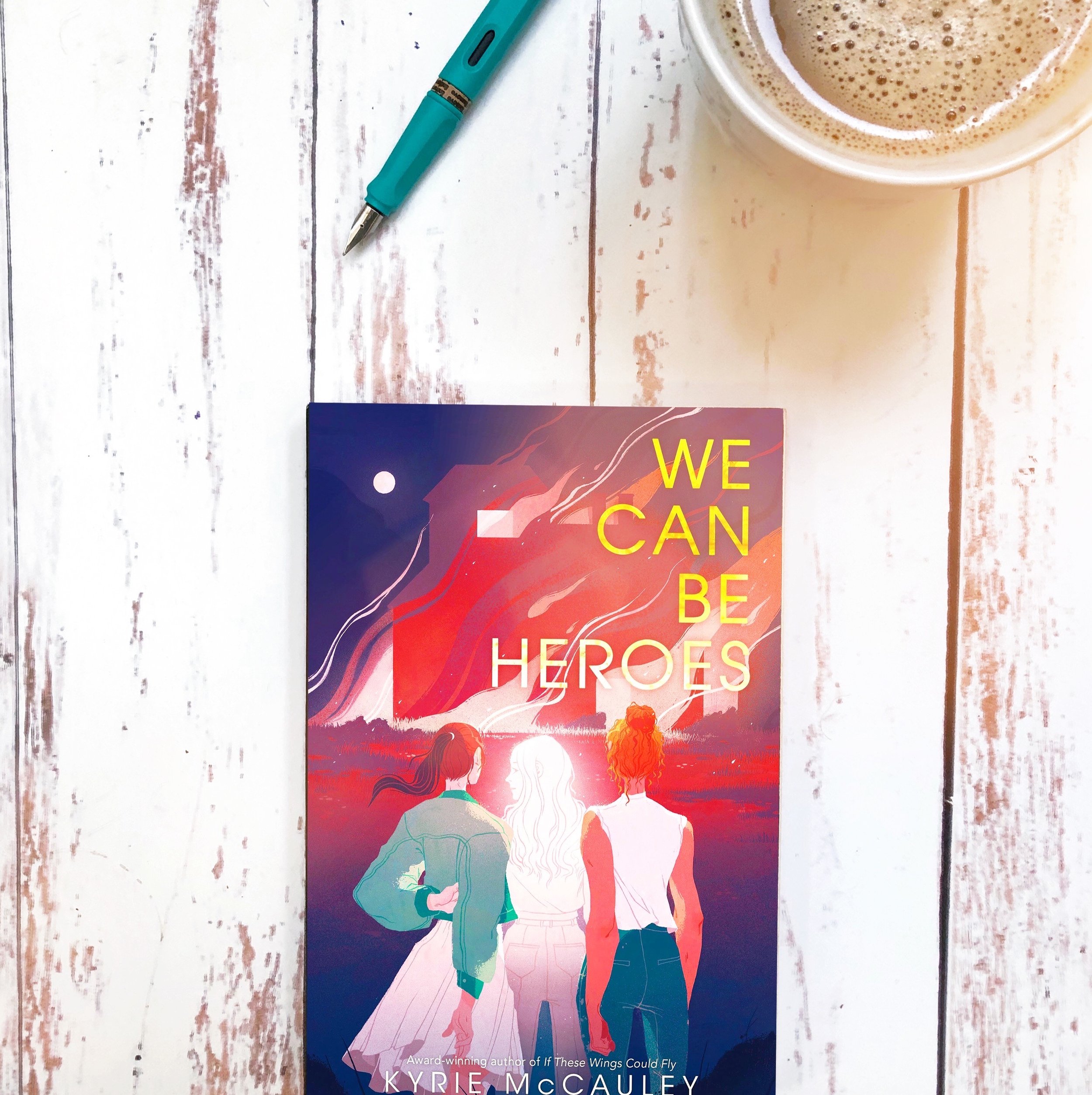

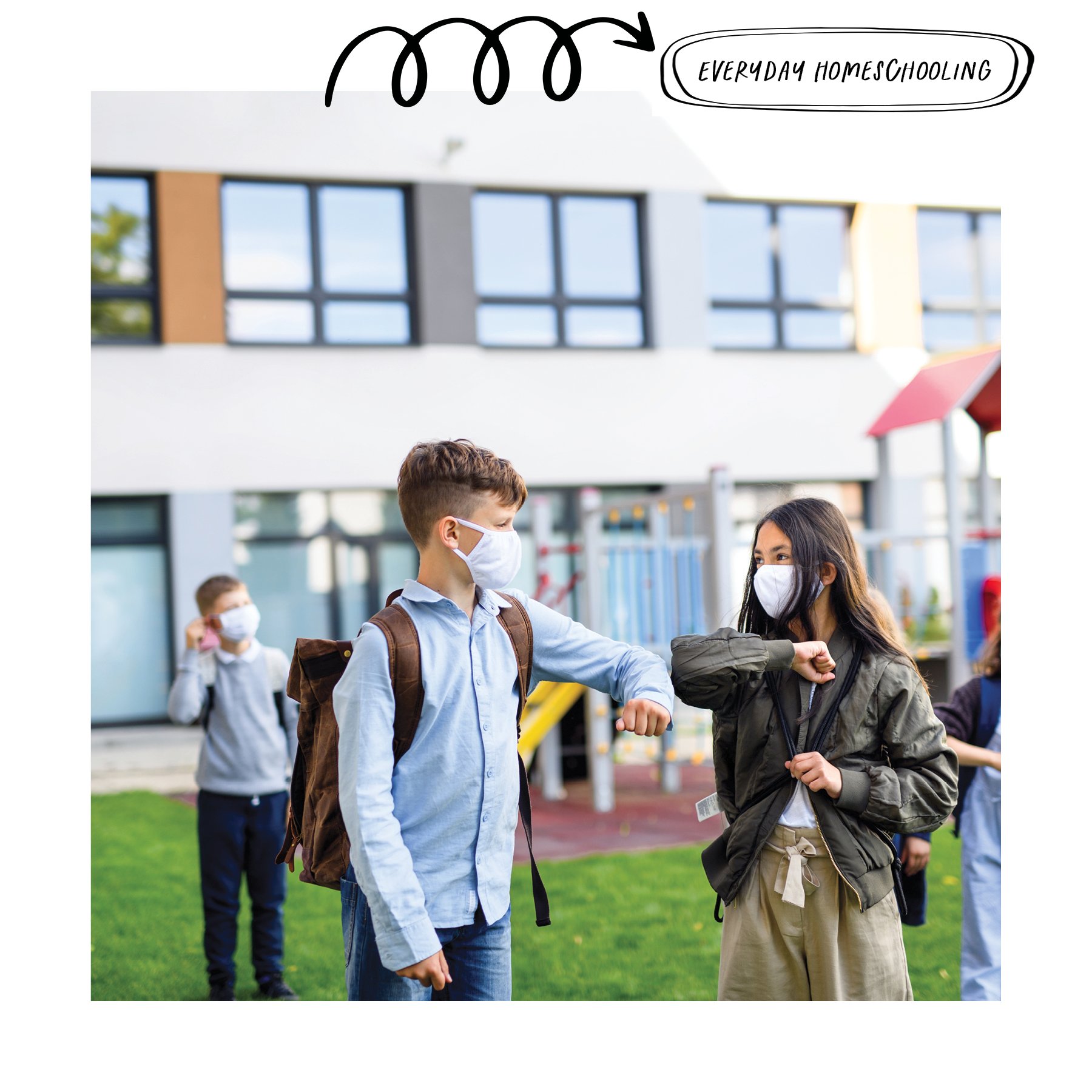



























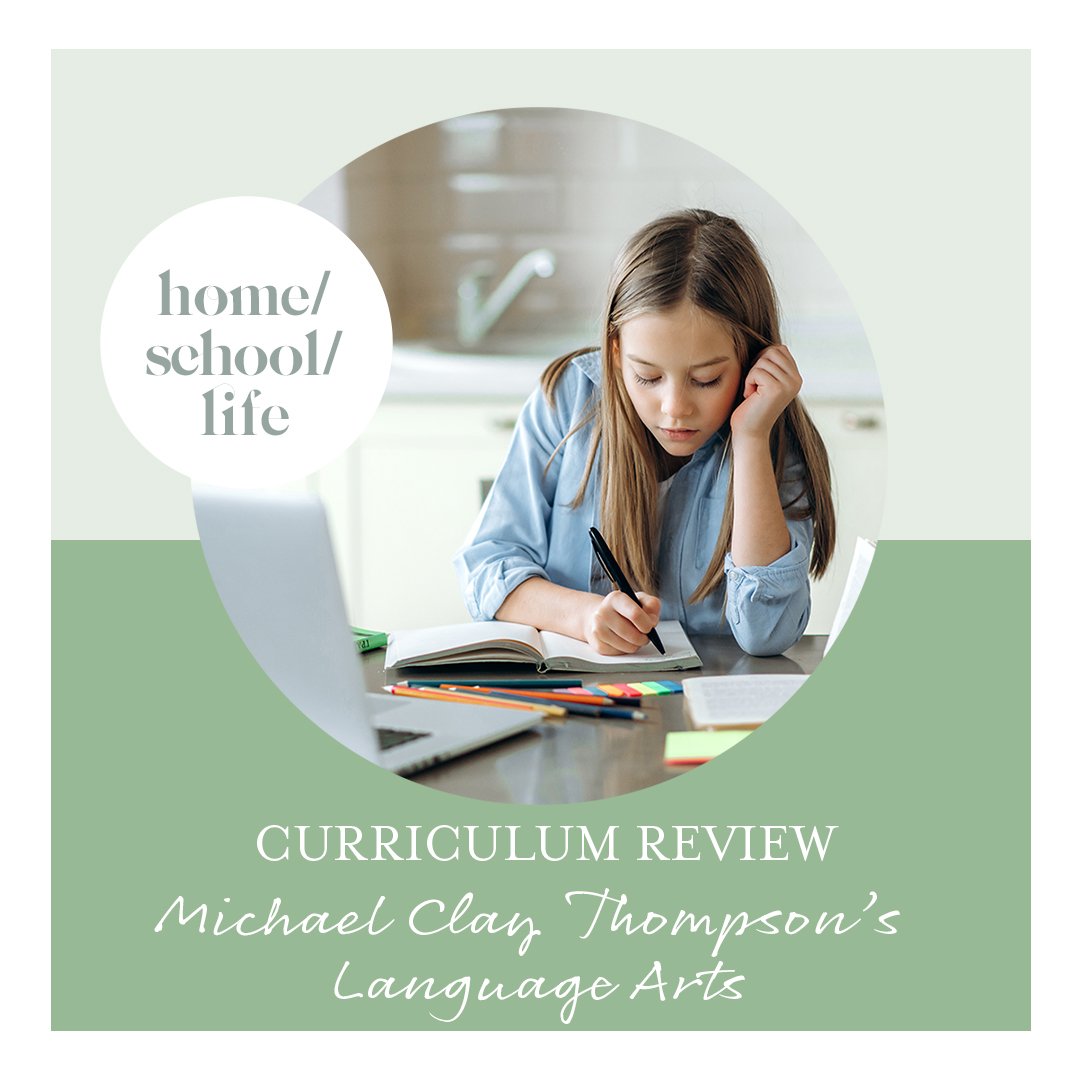














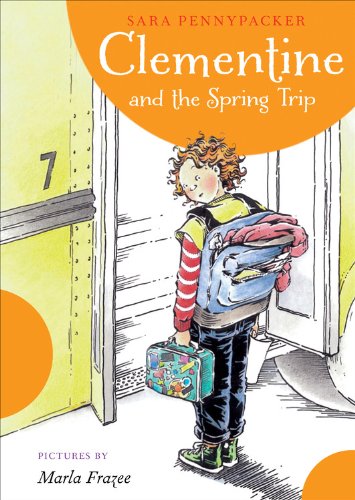
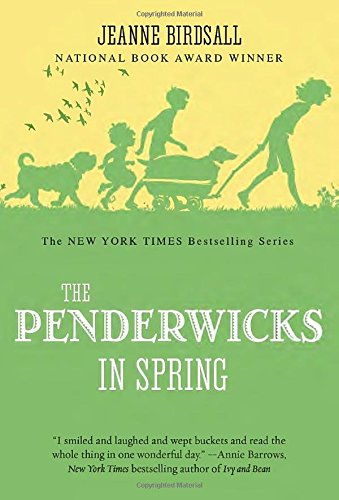





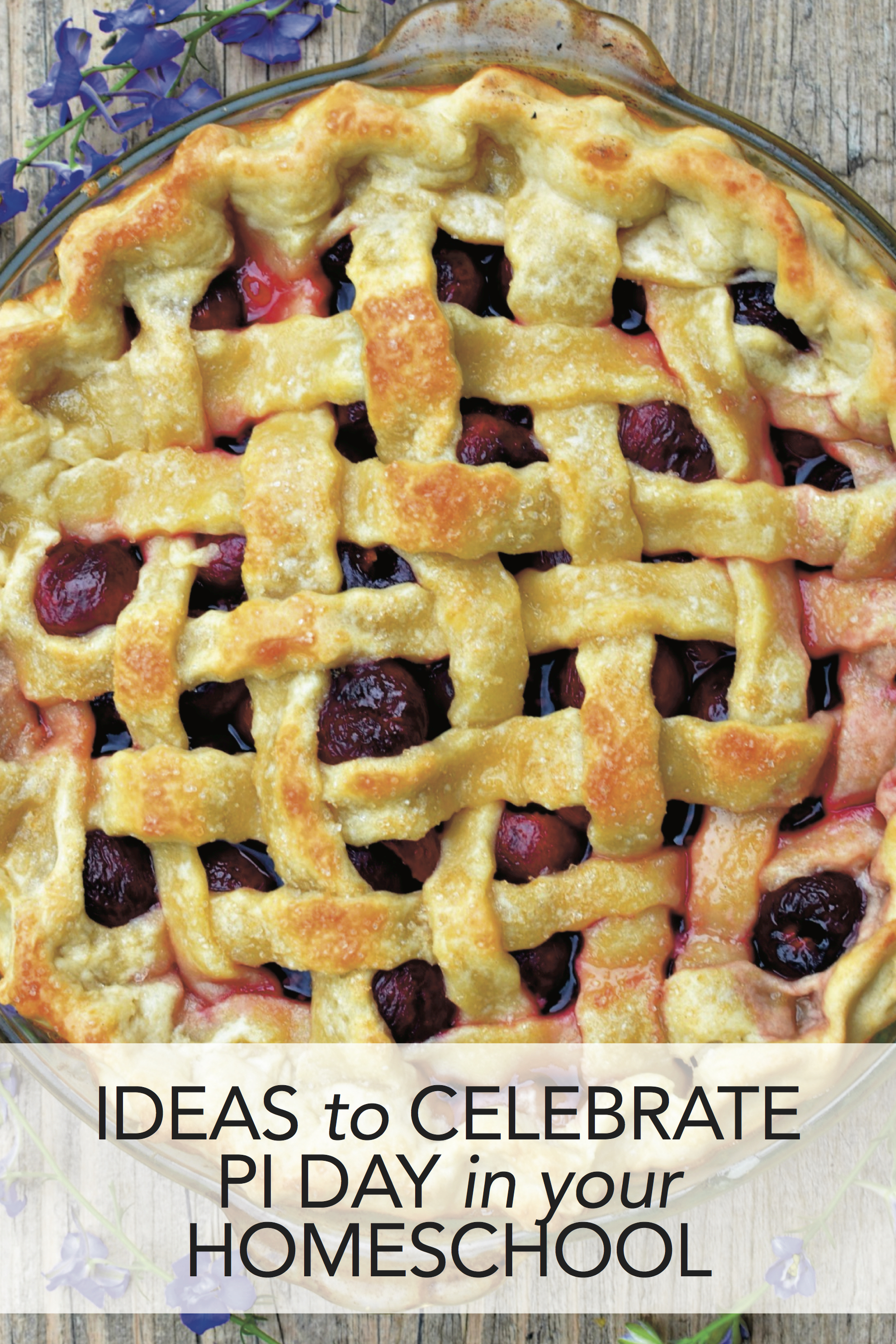

































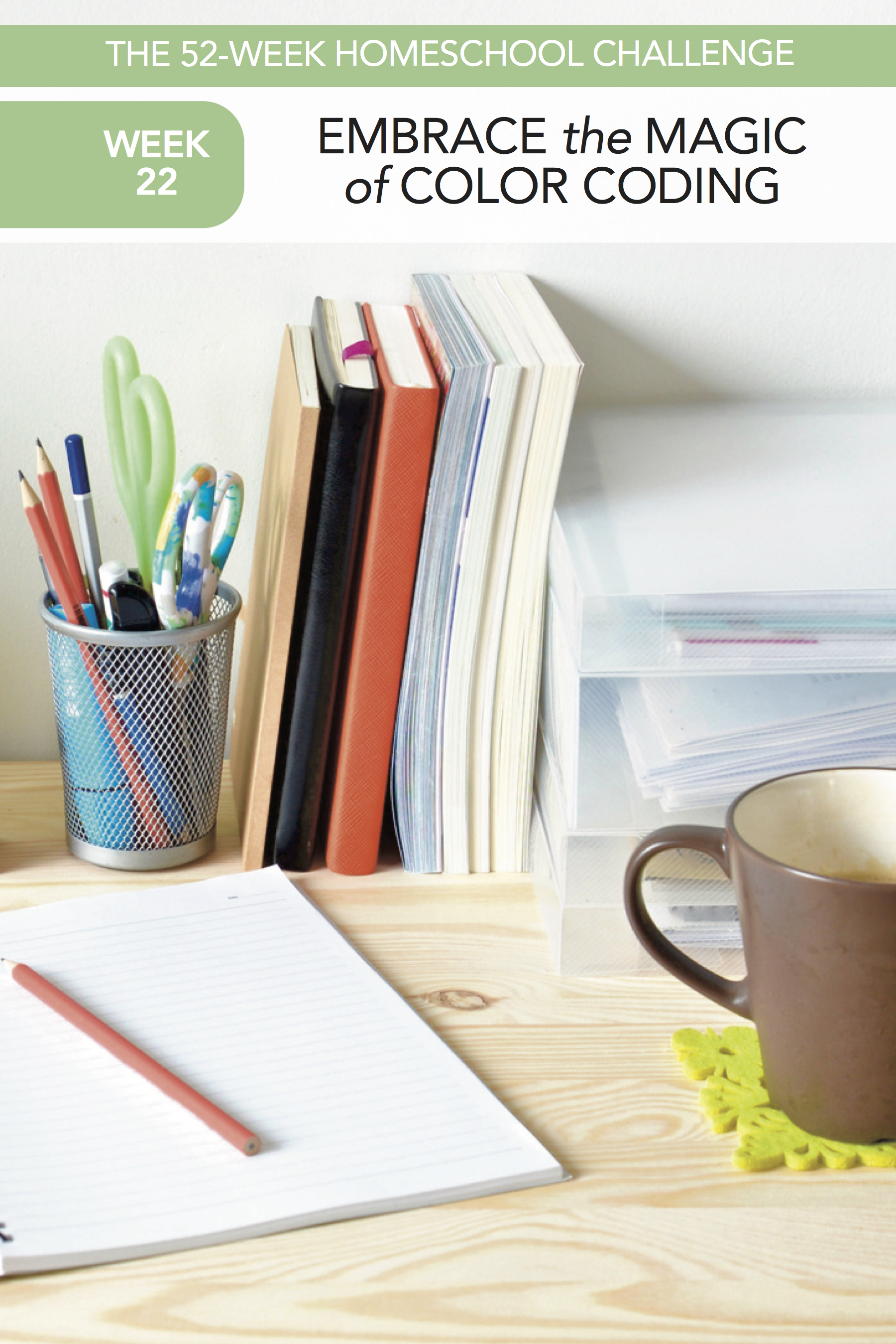




















AMY SHARONY is the founder and editor-in-chief of home | school | life magazine. She's a pretty nice person until someone starts pluralizing things with apostrophes, but then all bets are off.